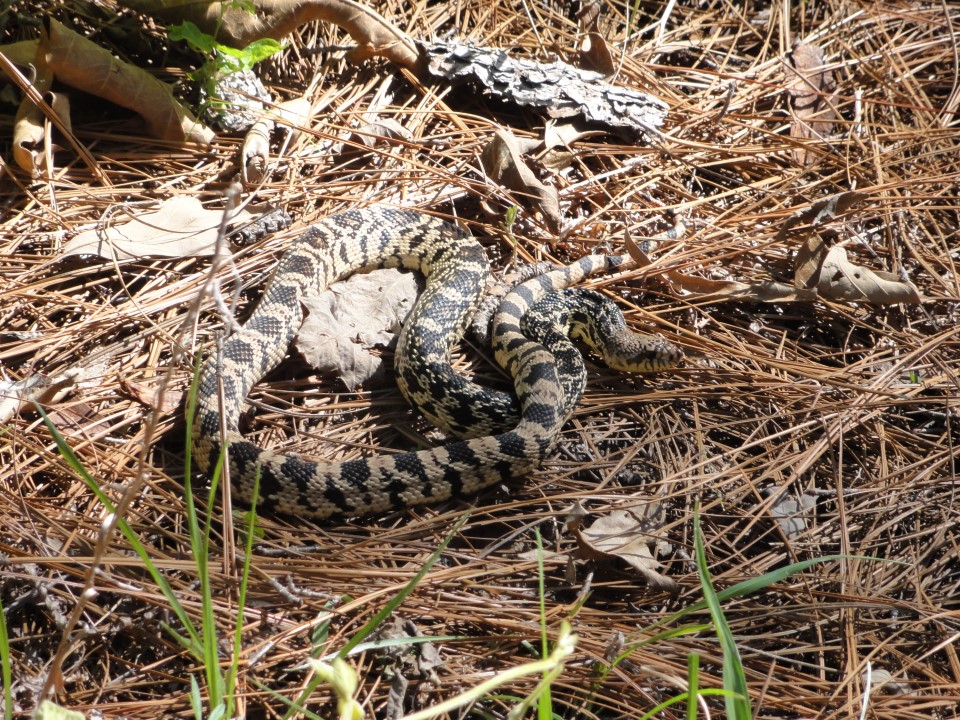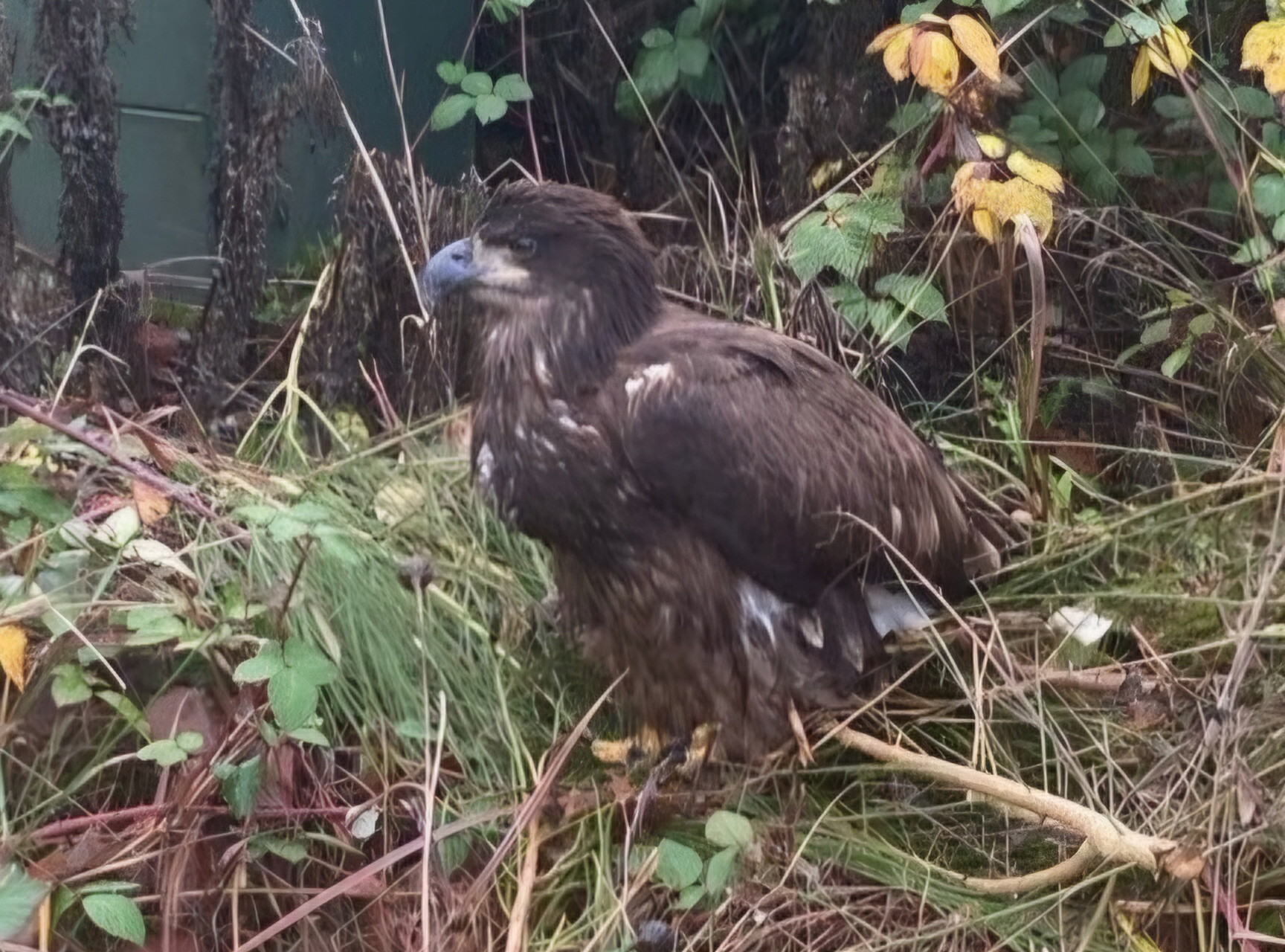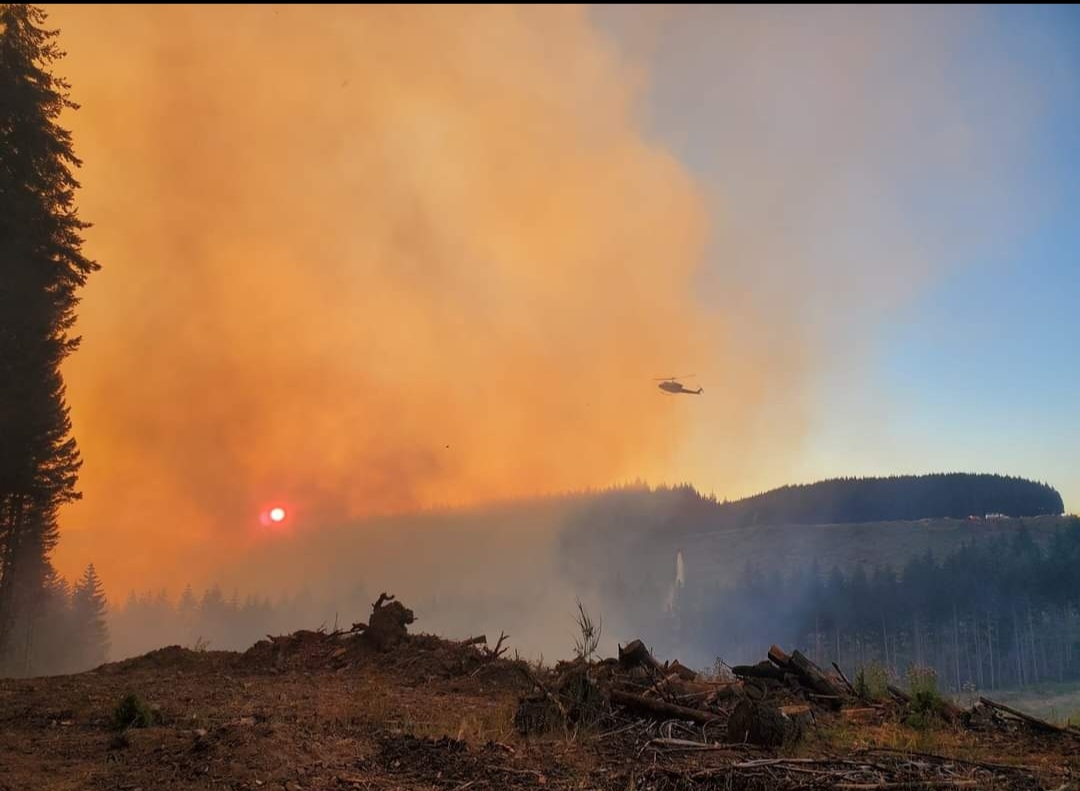
The Louisiana pinesnake is like a reclusive celebrity — almost never seen but discussed constantly and documented whenever it makes an appearance.
One of the world’s rarest snakes, it spends over half its life underground in the sandy burrows of its primary prey, the Baird’s pocket gopher. Known for producing the largest eggs and hatchlings of any snake in the U.S., the non-venomous pinesnake plays an important role in the balance of its native ecosystem by controlling the populations of gophers and other inhabitants in the labyrinth of tunnels that make up the gopher’s home.
The pinesnake was listed as threatened under the Endangered Species Act in 2018. Its habitat once spread across much of Louisiana and Texas but is now limited to just a few parishes and counties in both states.
The largest known population lives in rural Bienville Parish, Louisiana, an area that includes our timberlands. And on Jan. 8, 2020, we signed a Conservation Management Agreement with the state of Louisiana Department of Wildlife and Fisheries that grants us inclusion into a Candidate Conservation Agreement with Assurances — a specific habitat protection agreement authorized by the federal Endangered Species Act. The agreement, almost a decade in the making, will help protect the snake and its habitat while ensuring our ability to operate in the area.
PERSEVERING FOR CONSERVATION
The largest CCAA ever negotiated between the U.S. Fish and Wildlife Service and a single private landowner in the southeastern United States, the agreement covers nearly 667,000 acres in the snake’s historical range for a period of 30 years.
“This is a story about perseverance,” says Luke Walker, a Timberlands environmental manager based in Louisiana. “It took a long time, but we successfully worked with federal and state agencies to develop a conservation plan that’s good for the agencies, good for Weyerhaeuser and good for the pinesnake.”
Luke has been shepherding the project since 2013. Initially helmed by retired environmental affairs manager Bob Emory, the project faced many challenges along the way, from government shutdowns to disruption from the Plum Creek merger and multiple personnel changes. Luke has worked alongside Southern Timberlands environmental affairs manager Richard Stich for the last two and a half years.
“Often, minor but thoughtful conservation considerations can have meaningful positive results for rare species,” Richard says. “This agreement helps prove that rare species can coexist with managed forests.”
MEANINGFUL STEPS FORWARD
Developing conservation practices for a rare, well-hidden snake that spends most of its life underground is no easy task. To figure out where it might be located on nearly 667,000 acres of our lands, our teams collaborated with biologists from the U.S. Fish and Wildlife Service and the Louisiana Department of Wildlife and Fisheries.
“We know that the gopher, and therefore the snake, prefers well-drained sandy soil,” Luke says. “We used Geographical Information Systems to analyze soil types and identify areas where specific management practices are most likely to benefit the snake.”
Activities that disturb the snake’s habitat, such as road building or mechanical site preparation, can pose a threat. So can excessive woody midstory growth, which shades out the herbaceous grasses eaten by gophers and forces them to move on to find food. So the CCAA divides the 667,000 acres covered into three different priority levels:
- The highest priority stands, 444 acres in total, will be converted from loblolly pine to longleaf pine. Longleaf pine is better able to withstand prescribed burning, which stimulates grassy and herbaceous growth, thus providing food for the gophers. “More gophers hopefully means more pinesnakes,” Richard says.
- The second focus area, 1,383 acres, will be managed for open canopy conditions to maintain the grassy understory habitat of the gopher and pinesnake.
- The remaining 665,000 acres, located within the snake’s historical range, will be managed using our standard silvicultural practices.
“Most of our standard practices don’t pose a threat to the pinesnake,” Richard says. “Mechanical site prep generally isn’t used on the well-drained sandy sites where the gophers and snakes occur, and we try to keep our forests in open condition during much of the stand’s rotation through thinning and controlling woody competition. The conservation practices outlined in the agreement are common sense ways to benefit the snake.”
GOOD FOR ALL
“It’s a win on all sides,” Richard says. “The agreement greatly reduces risks associated with working around threatened or endangered species. It’s very satisfying to take meaningful action that invests in conservation and benefits us, too.”
Similar conservation projects are scattered across Southern Timberlands, including cooperative understandings and conservation easements to protect species such as gopher tortoises (as well as a 2019 CCAA protecting the Pacific fisher in our Western Timberlands). Some of these agreements include profitable incentives for the conservation of forests and their values to society, such as wildlife, water quality and wetlands restoration.
“Good forest management and habitat protection can go hand in hand,” Luke says. “Though growing trees is our core business, forest sustainability means more than that — it’s considering other functions and values forests provide, including wildlife, clean water, clean air, and recreation. Doing what’s right for the forests where we operate speaks to our core values of integrity and sustainability.”


